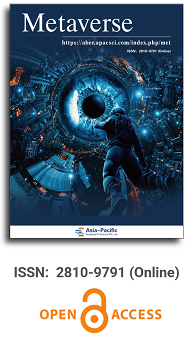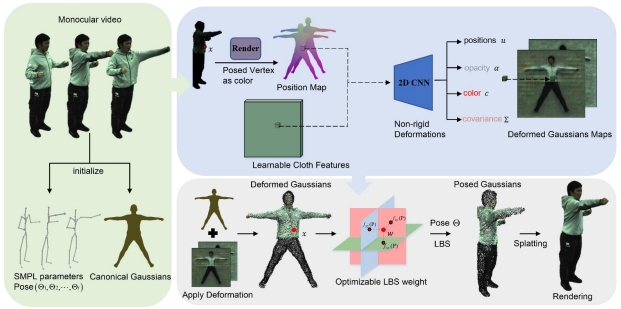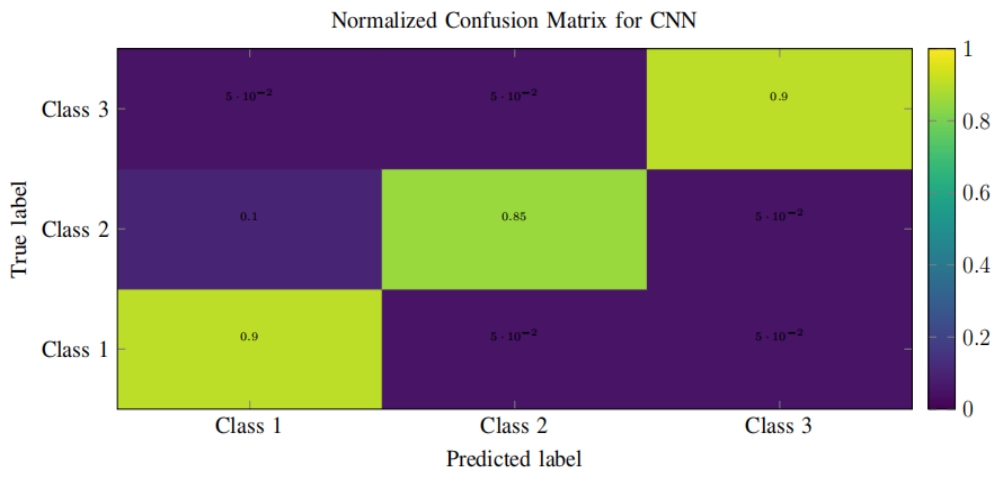1. Tong Y, Liu H, Zhang Z. Advancements in humanoid robots: A comprehensive review and future prospects. IEEE/CAA
Journal of Automatica Sinica. 2024; 11(2): 301–328. doi: 10.1109/JAS.2023.124140
2. Yang GZ, Bellingham J, Dupont PE, et al. The grand challenges of science robotics. Science Robotics. 2018; 3(14): eaar7650.
doi: 10.1126/scirobotics.aar7650
3. Zhao B, Wu Y, Wu C, Sun R. Deep reinforcement learning trajectory planning for robotic manipulator based on simulation
efficient training. Scientific Reports. 2025; 15(1): 8286. doi: 10.1038/s41598-025-93175-2
4. Liu Y, Liu S, Chen B, et al. Fusion-perception-to-action transformer: Enhancing robotic manipulation with 3-D visual fusion
attention and proprioception. IEEE Transactions on Robotics. 2025; 41: 1553–1567. doi: 10.1109/TRO.2025.3539193
5. Prasad V, Koert D, Stock-Homburg R, et al. MILD: Multimodal interactive latent dynamics for learning human-robot
interaction. In: Proceedings of the 2022 IEEE-RAS 21st International Conference on Humanoid Robots (Humanoids); 28–30
November 2022; Ginowan, Japan. pp. 472–479. doi: 10.1109/Humanoids53995.2022.10000239
6. Chignoli M, Kim D, Stanger-Jones E, Kim S. The MIT humanoid robot: Design, motion planning, and control for acrobatic
behaviors. In: Proceedings of the 2020 IEEE-RAS 20th International Conference on Humanoid Robots (Humanoids); 19–21
July 2021; Munich, Germany. pp.1–8. doi: 10.1109/HUMANOIDS47582.2021.9555782
7. Radosavovic I, Xiao T, Zhang B, et al. Real-world humanoid locomotion with reinforcement learning. Science Robotics.
2024; 9(89): eadi9579. doi: 10.1126/scirobotics.adi9579
8. Radosavovic I, Zhang B, Shi B, et al. Humanoid locomotion as next token prediction. In: Proceedings of the 38th
International Conference on Neural Information Processing Systems; 10–15 December 2024; Vancouver, BC, Canada. pp.
79307–79324. doi: 10.5555/3737916.3740434
9. Ren Y, Zhou Z, Xu Z, et al. Enabling versatility and dexterity of the dual-arm manipulators: A general framework toward
universal cooperative manipulation. IEEE Transactions on Robotics. 2024; 40: 2024–2045. doi: 10.1109/TRO.2024.3370048
10. Webster RJ III, Jones BA. Design and kinematic modeling of constant curvature continuum robots: A review. International
Journal of Robotics Research. 2010; 29(13): 1661–1683. doi: 10.1177/0278364910368147
11. Driess D, Xia F, Sajjadi MSM, et al. PaLM-E: An embodied multimodal language model. In: Proceedings of the
40th International Conference on Machine Learning; 23–29 July 2023; Honolulu, Hawaii, USA. pp. 8469–8488. doi:
10.5555/3618408.3618748
12. Xu S, Hu X, Yang R, et al. Transforming machines capable of continuous 3D shape morphing and locking. Nature Machine
Intelligence. 2025; 7: 703–715. doi: 10.1038/s42256-025-01028-4
13. Tao Z, Li X, Feng H, FuY. Design and control of a novel hydraulic-driven humanoid hand. International Journal of Humanoid
16Metaverse 2025, 6(3), 3735.
Robotics. 2024; 21(3): 2350015. doi: 10.1142/S0219843623500159
14. Nadon F, Valencia AJ, Payeur P. Multi-modal sensing and robotic manipulation of non-rigid objects: A survey. Robotics.
2018; 7(4): 74. doi: 10.3390/robotics7040074
15. Zhang X, Liao Z, Ma L, Yao J. Hierarchical multistrategy genetic algorithm for integrated process planning and scheduling.
Journal of Intelligent Manufacturing. 2022; 33(1): 223–246. doi: 10.1007/s10845-020-01659-x
16. Andrade-Ambriz YA, Ledesma S, Ibarra-Manzano MA, et al. Human activity recognition using temporal convolutional
neural network architecture. Expert Systems with Applications. 2022; 191: 116287. doi: 10.1016/j.eswa.2021.116287
17. Lai J, Chen Z, Zhu J, et al. Deep learning based traffic prediction method for digital twin network. Cognitive Computation.
2023; 15(5): 1748–1766. doi: 10.1007/s12559-023-10136-5
18. Shin H. A critical review of robot research and future research opportunities: Adopting a service ecosystem perspective.
International Journal of Contemporary Hospitality Management. 2022; 34(6): 2337–2358. doi: 10.1108/IJCHM-09-2021-1171
19. Qiao-Franco G, Zhu R. China’s artificial intelligence ethics: Policy development in an emergent community of practice.
Journal of Contemporary China. 2022; 33(146): 189–205. doi: 10.1080/10670564.2022.2153016
20. Mazumder A, Sahed MF, Tasneem Z, et al. Towards next generation digital twin in robotics: Trends, scopes, challenges, and
future. Heliyon. 2023; 9(2): e13359. doi: 10.1016/j.heliyon.2023.e13359
21. Balai PS, Sheikh A, Rabha G, et al. Revolutionizing agricultural machinery: The role of AI, IoT, and renewable energy in
enhancing efficiency and sustainability. International Journal of Scientific Research in Science and Technology. 2025; 12(2):
813–830. doi: 10.32628/IJSRST251222626
22. Zhao X, Li N. Multi-dimensional empowerment system for general education curriculum reform from cross-cultural
perspectives. The Educational Review, USA. 2025; 9(6): 568–572. doi: 10.26855/er.2025.06.001
23. Glikson E, Woolley AW. Human trust in artificial intelligence: Review of empirical research. Academy of Management
Annals. 2020; 14(2): 627–660. doi: 10.5465/annals.2018.0057
24. Yang J. Research on the criminal law regulation of crimes caused by out-of-control intelligent robot programs. Law and
Economy. 2024; 3(4): 63–72. doi: 10.56397/LE.2024.04.08
25. Dunleavy P, Margetts H. Data science, artificial intelligence and the third wave of digital era governance. Public Policy and
Administration. 2023; 40(2): 185–214. doi: 10.1177/09520767231198737
26. Zhao W, Yuan Y. Development of intelligent robots in the wave of embodied intelligence. National Science Review. 2025;
12(7): nwaf159. doi: 10.1093/nsr/nwaf159
27. Guerra A, Parisi F, Pi D. Liability for robots I: Legalchallenges. Journal of Institutional Economics. 2022; 18(3): 331–343.
doi: 10.1017/S1744137421000825
28. Bertolini A, Episcopo F. Robots and AI as legal subjects? Disentangling the ontological and functional perspective. Frontiers
in Robotics and AI. 2022; 9: 842213. doi: 10.3389/frobt.2022.842213
29. Chatzimichali A, Harrison R, Chrysostomou D. Toward privacy-sensitive human–robot interaction: Privacy terms and
human–data interaction in the personal robot era. Paladyn, Journal of Behavioral Robotics. 2020; 12(1): 160–174. doi:
10.1515/pjbr-2021-0013
30. de Almeida PGR, dos Santos CD, Farias JS. Artificial intelligence regulation: A framework for governance. Ethics and
Information Technology. 2021; 23(3): 505–525. doi: 10.1007/s10676-021-09593-z
31. Pal A, Restrepo V, Goswami D, Martinez RV. Exploiting mechanical instabilities in soft robotics: Control, sensing, and
actuation. Advanced Materials. 2021; 33(19): 2006939. doi: 10.1002/adma.202006939
32. Chalmers C, Keane T, Boden M, Williams M. Humanoid robots go to school. Education and Information Technologies. 2022;
27(6): 7563–7581. doi: 10.1007/s10639-022-10913-z
33. Zhao Z, Wu Q, Wang J, et al. Exploring embodied intelligence in soft robotics: A review. Biomimetics. 2024; 9(4): 248. doi:
10.3390/biomimetics9040248
34. Turing AM. Computing machinery and intelligence. Mind. 1950; LIX(236): 433–460. doi: 10.1093/mind/LIX.236.433
35. Mueller A. Modern robotics: Mechanics, planning, and control [bookshelf]. IEEE Control Systems Magazine. 2019; 39(6):
100–102. doi: 10.1109/MCS.2019.2937265














.jpg)
.jpg)

